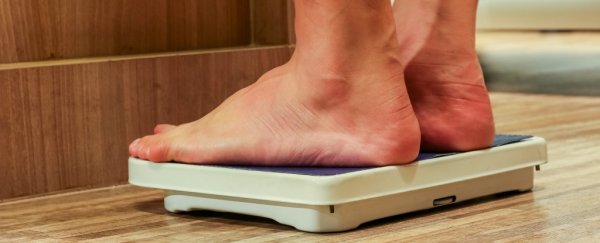After you hopped off the scale at your last doctor's visit, your physician might have showed you a colourful chart of your body mass index, or BMI.
The method, a measure of body fat based on your weight in relation to your height, can be traced back to the 1830s and, despite its popularity, is now understood to be a relatively crude measure of fitness.
Thankfully, there's finally an alternative - and it solves the biggest problem with the BMI.
On May 1, a team of Mayo Clinic researchers released the Body Volume Indicator, or BVI, a new tool that could transform how we size ourselves up.
The measurement is essentially a ratio comparing your total body volume to the volume of your abdomen, a measurement that can be taken manually or using an app.
While it might sound odd, our waists can provide key insight into our health, Jose Medina Inojosa, a preventive cardiology research fellow at the Mayo Clinic, tells Business Insider.
Several studies have documented a link between high amounts of abdominal fat and an increased risk of heart disease and type 2 diabetes.
In a large 2012 study, researchers looked at data from more than 340,000 Europeans and found that people who were overweight and also had large waists of 34.5 inches (87.63 cm) or more for women, and 40 inches (101.6 cm) or more for men, had nearly the same risk of developing type 2 diabetes as people who were clinically obese.
One of the most perilous pitfalls of BMI is the fact that it doesn't account for fat carried around their abdomen. All it measures is height and weight, which is why some lean people with large amounts of muscle can have a BMI that would qualify them as 'overweight'.
BVI is an important step toward answering some of these concerns, Medina Inojosa says.
Scientists still aren't sure why excess fat around our middles is connected to negative health outcomes, but they think it has to do with how fat inside the body, known as visceral fat, may interfere with the normal functioning of our internal organs.
Public health experts have known for years that the BMI wasn't a perfect tool for measuring physical fitness and that an improved metric should incorporate waist circumference.
"For health, the issue is not how much you weigh, but how much abdominal fat you have," the folks at Harvard Medical School wrote on their Staying Healthy blog in 2005.
The researchers behind the BVI also teamed up with body imaging technology company Select Research to create a corresponding app that compares an image of a person taken from the side with an image of them head-on to estimate the BVI ratio.
"By measuring weight and body fat with a focus on the abdomen," Medina Inojosa says, the "BVI offers a new, enhanced potential diagnostic tool".
This article was originally published by Business Insider.
